Onkar Krishna
Visually Similar Pair Alignment for Robust Cross-Domain Object Detection
Apr 09, 2025Abstract:Domain gaps between training data (source) and real-world environments (target) often degrade the performance of object detection models. Most existing methods aim to bridge this gap by aligning features across source and target domains but often fail to account for visual differences, such as color or orientation, in alignment pairs. This limitation leads to less effective domain adaptation, as the model struggles to manage both domain-specific shifts (e.g., fog) and visual variations simultaneously. In this work, we demonstrate for the first time, using a custom-built dataset, that aligning visually similar pairs significantly improves domain adaptation. Based on this insight, we propose a novel memory-based system to enhance domain alignment. This system stores precomputed features of foreground objects and background areas from the source domain, which are periodically updated during training. By retrieving visually similar source features for alignment with target foreground and background features, the model effectively addresses domain-specific differences while reducing the impact of visual variations. Extensive experiments across diverse domain shift scenarios validate our method's effectiveness, achieving 53.1 mAP on Foggy Cityscapes and 62.3 on Sim10k, surpassing prior state-of-the-art methods by 1.2 and 4.1 mAP, respectively.
MILA: Memory-Based Instance-Level Adaptation for Cross-Domain Object Detection
Sep 03, 2023
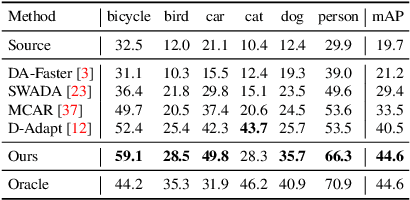
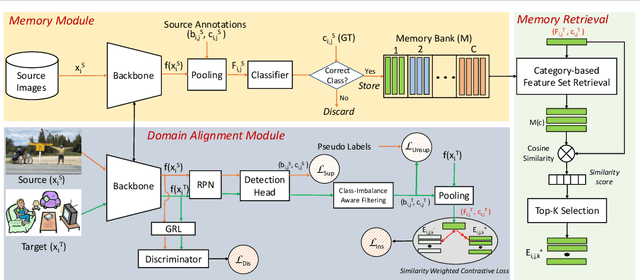
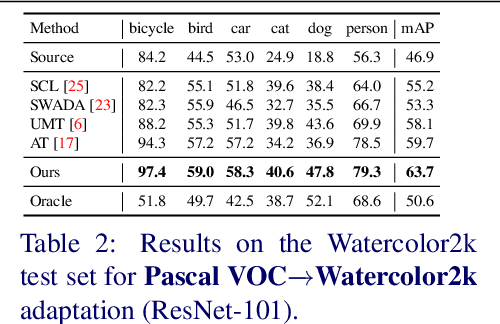
Abstract:Cross-domain object detection is challenging, and it involves aligning labeled source and unlabeled target domains. Previous approaches have used adversarial training to align features at both image-level and instance-level. At the instance level, finding a suitable source sample that aligns with a target sample is crucial. A source sample is considered suitable if it differs from the target sample only in domain, without differences in unimportant characteristics such as orientation and color, which can hinder the model's focus on aligning the domain difference. However, existing instance-level feature alignment methods struggle to find suitable source instances because their search scope is limited to mini-batches. Mini-batches are often so small in size that they do not always contain suitable source instances. The insufficient diversity of mini-batches becomes problematic particularly when the target instances have high intra-class variance. To address this issue, we propose a memory-based instance-level domain adaptation framework. Our method aligns a target instance with the most similar source instance of the same category retrieved from a memory storage. Specifically, we introduce a memory module that dynamically stores the pooled features of all labeled source instances, categorized by their labels. Additionally, we introduce a simple yet effective memory retrieval module that retrieves a set of matching memory slots for target instances. Our experiments on various domain shift scenarios demonstrate that our approach outperforms existing non-memory-based methods significantly.
Computational Attention System for Children, Adults and Elderly
Apr 18, 2019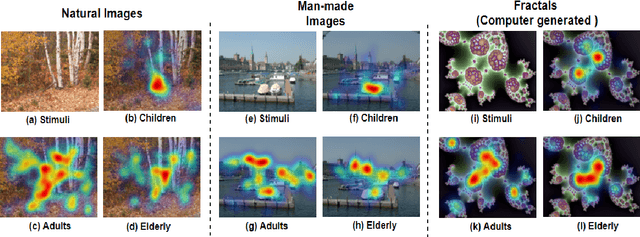

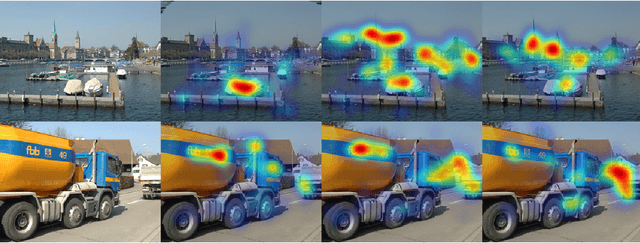
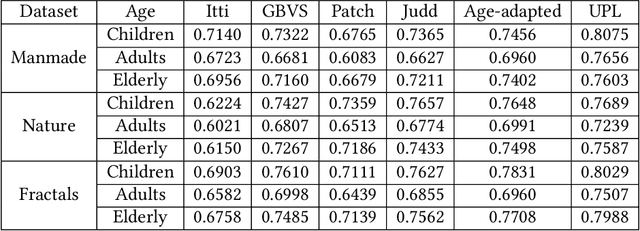
Abstract:The existing computational visual attention systems have focused on the objective to basically simulate and understand the concept of visual attention system in adults. Consequently, the impact of observer's age in scene viewing behavior has rarely been considered. This study quantitatively analyzed the age-related differences in gaze landings during scene viewing for three different class of images: naturals, man-made, and fractals. Observer's of different age-group have shown different scene viewing tendencies independent to the class of the image viewed. Several interesting observations are drawn from the results. First, gaze landings for man-made dataset showed that whereas child observers focus more on the scene foreground, i.e., locations that are near, elderly observers tend to explore the scene background, i.e., locations farther in the scene. Considering this result a framework is proposed in this paper to quantitatively measure the depth bias tendency across age groups. Second, the quantitative analysis results showed that children exhibit the lowest exploratory behavior level but the highest central bias tendency among the age groups and across the different scene categories. Third, inter-individual similarity metrics reveal that an adult had significantly lower gaze consistency with children and elderly compared to other adults for all the scene categories. Finally, these analysis results were consequently leveraged to develop a more accurate age-adapted saliency model independent to the image type. The prediction accuracy suggests that our model fits better to the collected eye-gaze data of the observers belonging to different age groups than the existing models do.
Gaze Distribution Analysis and Saliency Prediction Across Age Groups
May 31, 2017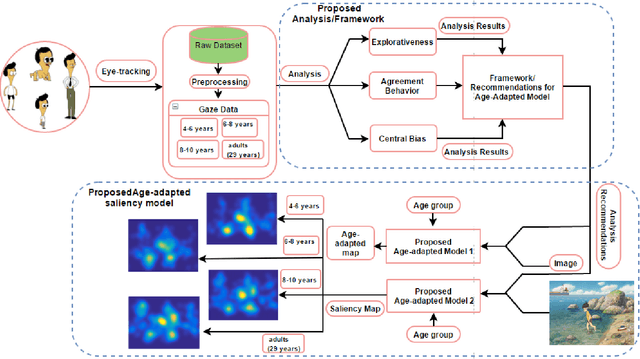



Abstract:Knowledge of the human visual system helps to develop better computational models of visual attention. State-of-the-art models have been developed to mimic the visual attention system of young adults that, however, largely ignore the variations that occur with age. In this paper, we investigated how visual scene processing changes with age and we propose an age-adapted framework that helps to develop a computational model that can predict saliency across different age groups. Our analysis uncovers how the explorativeness of an observer varies with age, how well saliency maps of an age group agree with fixation points of observers from the same or different age groups, and how age influences the center bias. We analyzed the eye movement behavior of 82 observers belonging to four age groups while they explored visual scenes. Explorativeness was quantified in terms of the entropy of a saliency map, and area under the curve (AUC) metrics was used to quantify the agreement analysis and the center bias. These results were used to develop age adapted saliency models. Our results suggest that the proposed age-adapted saliency model outperforms existing saliency models in predicting the regions of interest across age groups.
 Add to Chrome
Add to Chrome Add to Firefox
Add to Firefox Add to Edge
Add to Edge